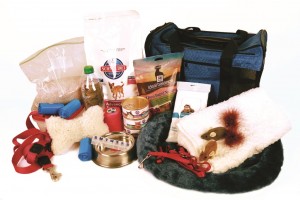Widgetized Section
Go to Admin » Appearance » Widgets » and move Gabfire Widget: Social into that MastheadOverlay zone
Hill’s Pet Nutrition stresses emergency preparedness for pets, people in natural disasters
Even though summer is winding down, wildfire and major storms can still strike without a notice in Colorado’s high country, prompting Hill’s Pet Nutrition to remind pet owners of how they can prepare themselves and their pets in case of an emergency.
“When disaster strikes, there is often little time to think. That’s why it’s important to have a plan in place for yourselves and your family, including your pets,” said Kostas Kontopanos, President of Hill’s Pet Nutrition. “While Hill’s is at the ready to do what we can to help when pets are in need, we also want to highlight actions owners can take to ensure the safety and care of their pets in a disaster.”
Hill’s recommends the following Seven Tips to Ensure Your Pet’s Safety in an Emergency:
- Ensure your pet can be identified by either a microchip or collar ID tag and that contact information is up-to-date.
- Prepare a “Pet Emergency Go Kit” of pet supplies that is readily accessible in an emergency. Your Pet Go-Kit should include: first aid supplies and guide book; a three days’ supply of pet food (in a waterproof container) and bottled water; a safety harness and leash; waste clean-up supplies; medications and medical records; a contact list of veterinarian and pet care organizations; information on your pet’s feeding routine and any behavioral issues; comfort toys; and a blanket.
- Display a pet rescue decal on your front door or window to let first responders know there is a pet in the house. Include your veterinarian’s contact information.
- Learn where your pet likes to hide in your house when frightened. Finding your pet quickly will help you evacuate faster.
- Identify a location to take your pet if you need to leave your immediate area. Keep in mind that disaster shelters for people may not be open to pets. Scout hotels and motels with pet-friendly policies and ask relatives or friends if they could house you and your pet.
- Carry a picture of your pet in the event of separation.
- If you need to evacuate, consider taking a pet carrier or crate for transport and safe-keeping.
When disaster does strike, the Hill’s Disaster Relief Network is positioned to quickly respond with shipments of pet food to communities impacted by disaster. Hill’s established the first-of-its-kind national network in 2013 as an extension of its Food, Shelter & Love™ program that provides discounted Science Diet® pet food to more than 800 shelters. In its first year, the Hill’s network has delivered free pet food to 50 shelters and veterinary clinics across the country in response to 11 major incidents – including floods in Colorado, fires in Idaho and Arizona, tornadoes in Oklahoma and Kansas, the fertilizer plant explosion in Waco, Texas, and most recently, the mudslide in Washington and tornadoes in the central and south regions of the country.
“The responsibility for shelters during a disaster is overwhelming since we are not just caring for our own shelter animals, but also pets that have become separated from their owners,” said Katie Borremans of the Humane Society of the Pikes Peak Region in Colorado. “To handle the increased volume, we rely on contributions such as the food donations from Hill’s, which have been instrumental in supporting our organization during disaster.”
“We don’t know when and where the next disaster will hit, but the best we can do is to be ready,” Kontopanos said. “That’s our message to pet owners, and that’s exactly what we have tried to do with the Hill’s Disaster Relief Network, which has worked to get pet food into disaster sites as quickly as possible.”
Since 2002, the Hill’s Food, Shelter & Love™ program has donated more than $275 million worth of Hill’s Science Diet® brand foods to over 1,000 shelters nationwide and helped more than 7 million pets find new homes. Every day, the program helps feed more than 100,000 homeless pets across the country. Through the Disaster Relief Network, Hill’s has increased the reach of its assistance to pets, pet owners and communities during natural disasters and emergencies.
A consumer resource page on disaster preparedness and safety is at the Hill’s website, along with more information on the Disaster Relief Network. To request assistance during an emergency, shelters can contact DisasterRelief@hillspet.com.



